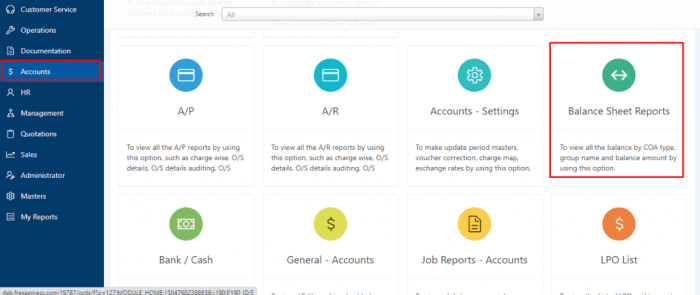Wyatt is shopping for life insurance – Wyatt embarks on a journey to secure life insurance, a crucial decision that demands careful consideration. This comprehensive guide will delve into the intricacies of life insurance, empowering Wyatt and all readers with the knowledge and insights to make informed choices.
Understanding the factors influencing life insurance needs, the diverse types of policies available, and the intricacies of riders and benefits is paramount. Wyatt’s quest for life insurance unveils the significance of coverage options, the nuances of the shopping process, and the impact of underwriting and tax implications.
Personal Considerations: Wyatt Is Shopping For Life Insurance

The amount of life insurance needed depends on various personal factors, including age, health, and lifestyle.
Younger individuals typically have lower insurance needs as they have fewer financial responsibilities and a longer earning potential. As individuals age, their insurance needs increase due to higher income, increased family responsibilities, and potential health issues.
Health
Health plays a significant role in determining life insurance premiums. Individuals with good health and no major medical conditions qualify for lower premiums compared to those with pre-existing conditions or high-risk lifestyles.
Insurers assess health status through medical examinations, blood tests, and a review of medical history. This information helps them determine the risk of premature death and set appropriate premiums.
Lifestyle
Lifestyle choices can also impact life insurance premiums. Individuals who engage in risky activities, such as smoking, excessive alcohol consumption, or dangerous sports, may face higher premiums due to increased mortality risk.
Insurers consider these factors to assess the likelihood of premature death and adjust premiums accordingly.
Income, Debts, and Family Responsibilities
Income, debts, and family responsibilities influence life insurance coverage requirements.
- Income:Higher income earners may require more coverage to maintain their standard of living for their family in the event of their untimely demise.
- Debts:Individuals with significant debts, such as mortgages or student loans, may need life insurance to ensure their debts are paid off in case of their death.
- Family responsibilities:Individuals with dependents, such as young children or elderly parents, require sufficient coverage to provide financial support in case of their passing.
By considering these factors, individuals can determine the appropriate amount of life insurance coverage to meet their specific needs and ensure financial security for their loved ones.
Types of Life Insurance
Life insurance is a crucial financial tool that provides financial protection for loved ones in the event of an insured individual’s untimely demise. Understanding the various types of life insurance policies is essential to make informed decisions.
Term Life Insurance
Term life insurance is a simple and affordable option that provides coverage for a specified period, typically ranging from 10 to 30 years. The premiums remain constant throughout the policy term, and the death benefit is paid to the beneficiary if the insured individual passes away within the coverage period.
However, if the insured individual outlives the policy term, the coverage expires, and there is no cash value or refund.
Whole Life Insurance, Wyatt is shopping for life insurance
Whole life insurance offers lifelong coverage and accumulates a cash value component over time. The premiums are higher than term life insurance, but the cash value grows on a tax-deferred basis and can be borrowed against or withdrawn in the future.
The death benefit is guaranteed as long as the premiums are paid, and the policyholder can access the cash value for various purposes, such as retirement planning or educational expenses.
Universal Life Insurance
Universal life insurance combines features of both term and whole life insurance. It provides lifelong coverage with a flexible premium structure. The policyholder can adjust the premiums and death benefit based on their financial situation and needs. The cash value component grows on a tax-deferred basis, and the policyholder has the flexibility to access the funds through withdrawals or loans.
Choosing the right type of life insurance depends on individual circumstances, financial goals, and risk tolerance. Term life insurance is suitable for temporary coverage needs and affordability, while whole and universal life insurance offer lifelong protection and cash value accumulation.
Riders and Benefits

Life insurance riders are optional add-ons that can enhance the coverage and benefits of a life insurance policy. They provide additional protection against specific events or circumstances, such as accidental death, disability, or long-term care expenses.
Adding riders to a life insurance policy can increase the premiums, but they can also provide valuable peace of mind and financial security. It is important to carefully consider the potential benefits and costs of riders before deciding whether to add them to a policy.
Accidental Death Benefit
- Provides a lump sum payment if the insured dies as a result of an accident.
- The benefit amount is typically a multiple of the policy’s death benefit.
- This rider can be especially beneficial for individuals who are exposed to higher risks of accidental death, such as those who work in hazardous occupations or engage in high-risk activities.
Disability Income Benefit
- Provides monthly income payments if the insured becomes disabled and unable to work.
- The benefit amount is typically a percentage of the insured’s income.
- This rider can help to protect against the loss of income that can occur if the insured is unable to work due to an illness or injury.
Long-Term Care Benefit
- Provides coverage for the costs of long-term care, such as nursing home care or assisted living.
- The benefit amount is typically a daily or monthly payment.
- This rider can help to offset the high costs of long-term care, which can be a significant financial burden for families.
Coverage Options

Coverage options in life insurance refer to the different amounts and types of benefits that a policy provides to beneficiaries upon the insured’s death.
The primary coverage amount is known as the face value or death benefit. It represents the lump sum payout that the policy will provide to the beneficiaries.
Determining Coverage Amount
Determining the appropriate coverage amount is crucial to ensure adequate financial protection for loved ones. Factors to consider include:
- Income replacement: Determine the amount of income the policy should replace to maintain the family’s standard of living.
- Debt coverage: Calculate the outstanding debts, such as mortgages, loans, and credit card balances, that need to be covered.
- Final expenses: Estimate the costs associated with the insured’s final arrangements, such as funeral expenses and medical bills.
- Education funding: Consider the potential costs of education for children or other dependents.
- Lifestyle expenses: Determine the amount needed to maintain the desired lifestyle for beneficiaries.
Shopping for Life Insurance
Shopping for life insurance involves several key steps to ensure you find the right policy that meets your needs and budget. This guide will provide a step-by-step approach to help you navigate the process effectively.
Step 1: Research and Determine Your Needs
Begin by assessing your financial situation, family responsibilities, and future goals. Determine the amount of coverage you need to provide financial security for your loved ones in the event of your passing. Consider factors such as income, debts, expenses, and future education costs.
Step 2: Compare Quotes
Obtain quotes from multiple insurance providers to compare coverage options and premiums. Use online comparison tools or consult with insurance agents to gather quotes. Compare the following aspects:
- Coverage amount
- Policy term
- Premium costs
- Riders and benefits
- Financial strength and reputation of the insurer
Step 3: Select a Provider
Once you have compared quotes, choose a provider that offers the best combination of coverage, cost, and customer service. Consider the following factors:
- Financial stability and experience
- Customer satisfaction ratings
- Transparency and ease of communication
- Availability of additional services and support
Underwriting Process

The underwriting process is a critical step in obtaining life insurance. It involves assessing the risk of the applicant and determining the appropriate premium and coverage amount.
The underwriting process typically includes the following steps:
Medical Exams
Medical exams are typically required for all applicants for life insurance. The exam will include a physical examination, blood and urine tests, and a review of the applicant’s medical history. The results of the medical exam will be used to assess the applicant’s overall health and risk of death.
Financial Checks
Financial checks are also required for all applicants for life insurance. The financial check will include a review of the applicant’s income, assets, and debts. The results of the financial check will be used to assess the applicant’s ability to pay the premiums and the likelihood that they will be able to maintain the policy in force.
Lifestyle Assessments
Lifestyle assessments are used to assess the applicant’s overall health and lifestyle. The lifestyle assessment will include questions about the applicant’s smoking habits, alcohol consumption, and exercise habits. The results of the lifestyle assessment will be used to assess the applicant’s risk of death.
Tax Implications
Life insurance policies have several tax implications that individuals should be aware of to optimize their financial planning.
Income tax is generally not applicable to life insurance proceeds paid to beneficiaries upon the policyholder’s death. However, if the policy is surrendered or matures while the policyholder is alive, any gains may be subject to income tax.
Estate Tax
Life insurance proceeds are generally not included in the policyholder’s taxable estate, reducing the overall estate tax liability.
Gift Tax
Gifts of life insurance policies can be subject to gift tax if the value of the policy exceeds the annual gift tax exclusion. However, there are strategies to minimize gift tax liability, such as using an irrevocable life insurance trust (ILIT).
Structuring life insurance policies strategically can help individuals minimize their tax liability and maximize the financial benefits for their beneficiaries.
Helpful Answers
What factors influence life insurance needs?
Age, health, lifestyle, income, debts, and family responsibilities play crucial roles in determining life insurance requirements.
What are the key differences between term, whole, and universal life insurance?
Term life insurance provides coverage for a specific period, whole life insurance offers lifelong coverage with a cash value component, and universal life insurance combines elements of both.
How do riders enhance life insurance policies?
Riders extend coverage beyond basic death benefits, offering protection against accidental death, disability, and long-term care expenses.
What is the underwriting process for life insurance?
Underwriting involves assessing risk factors through medical exams, financial checks, and lifestyle evaluations to determine premiums and coverage.
How do tax implications impact life insurance policies?
Life insurance policies have tax implications related to income, estate, and gift taxes, and structuring policies strategically can minimize tax liability.

